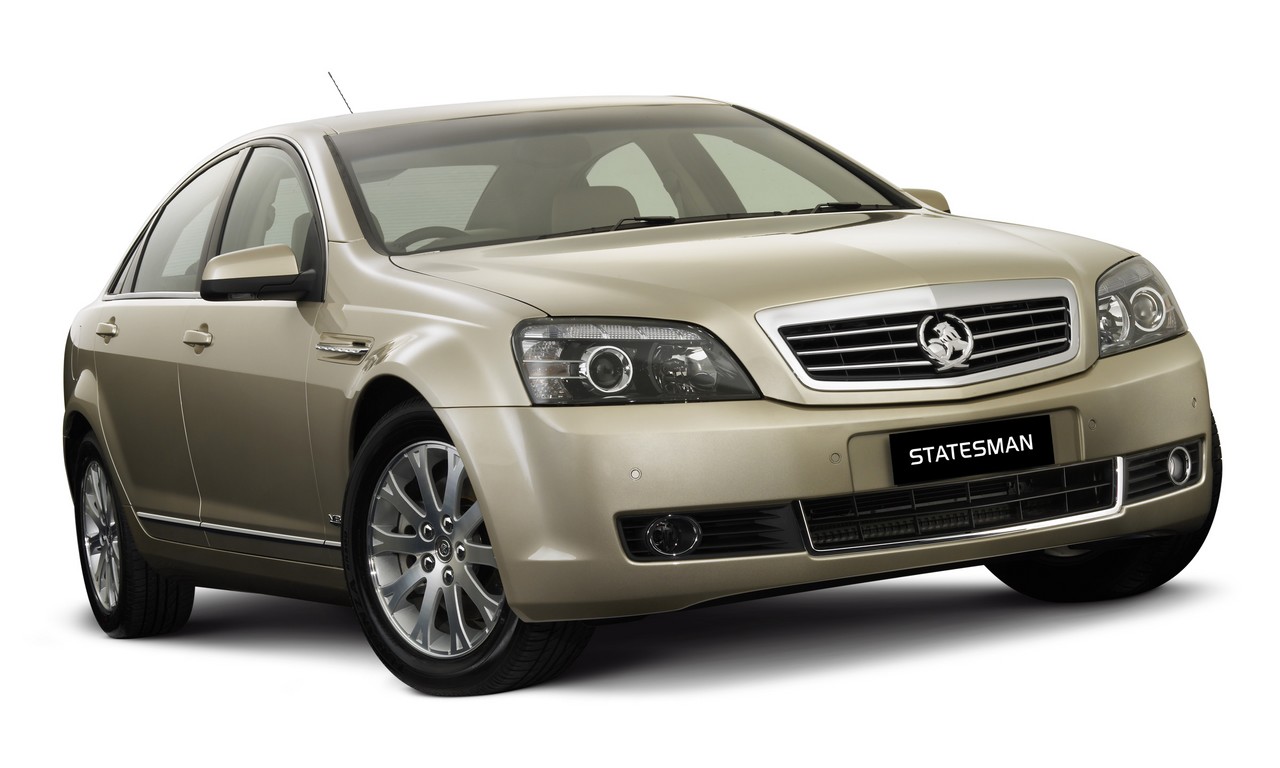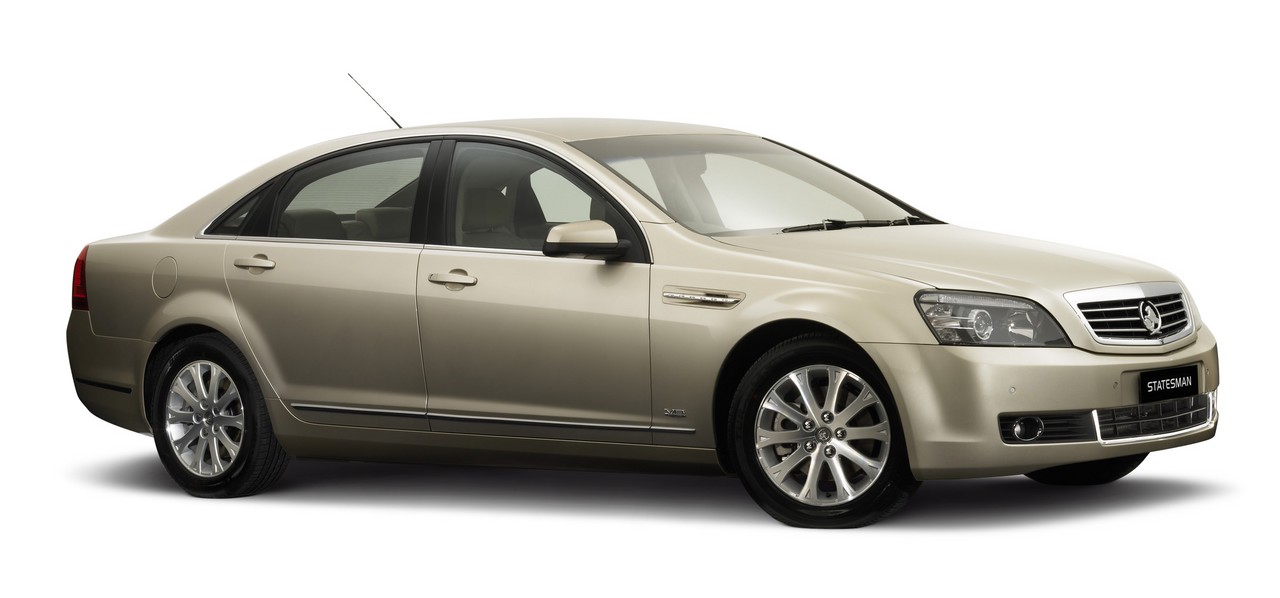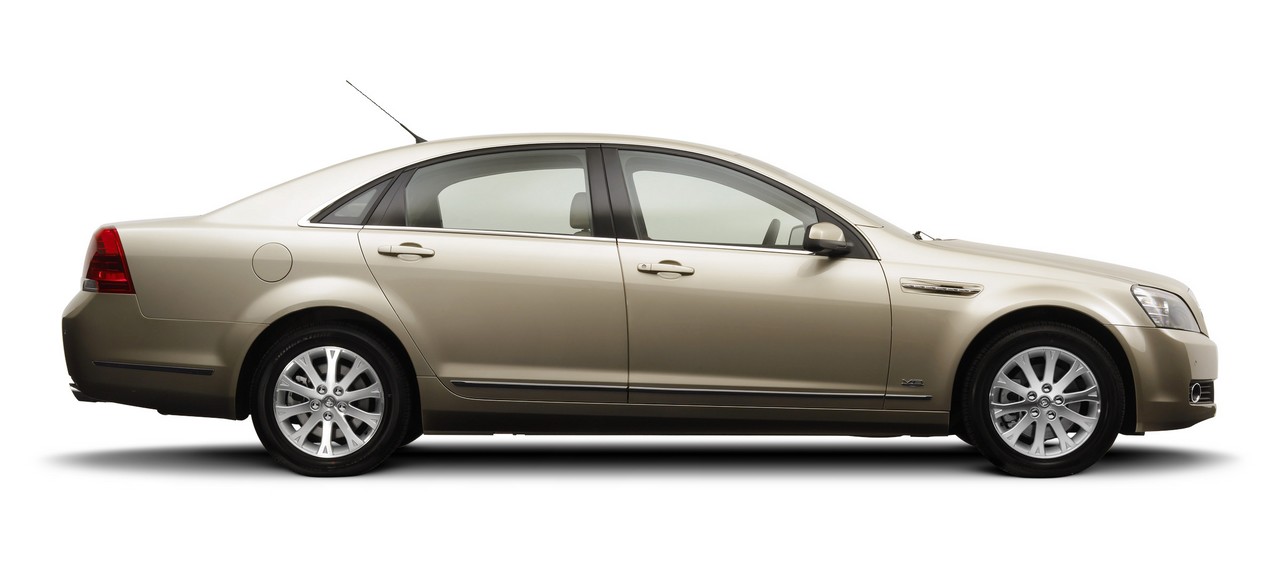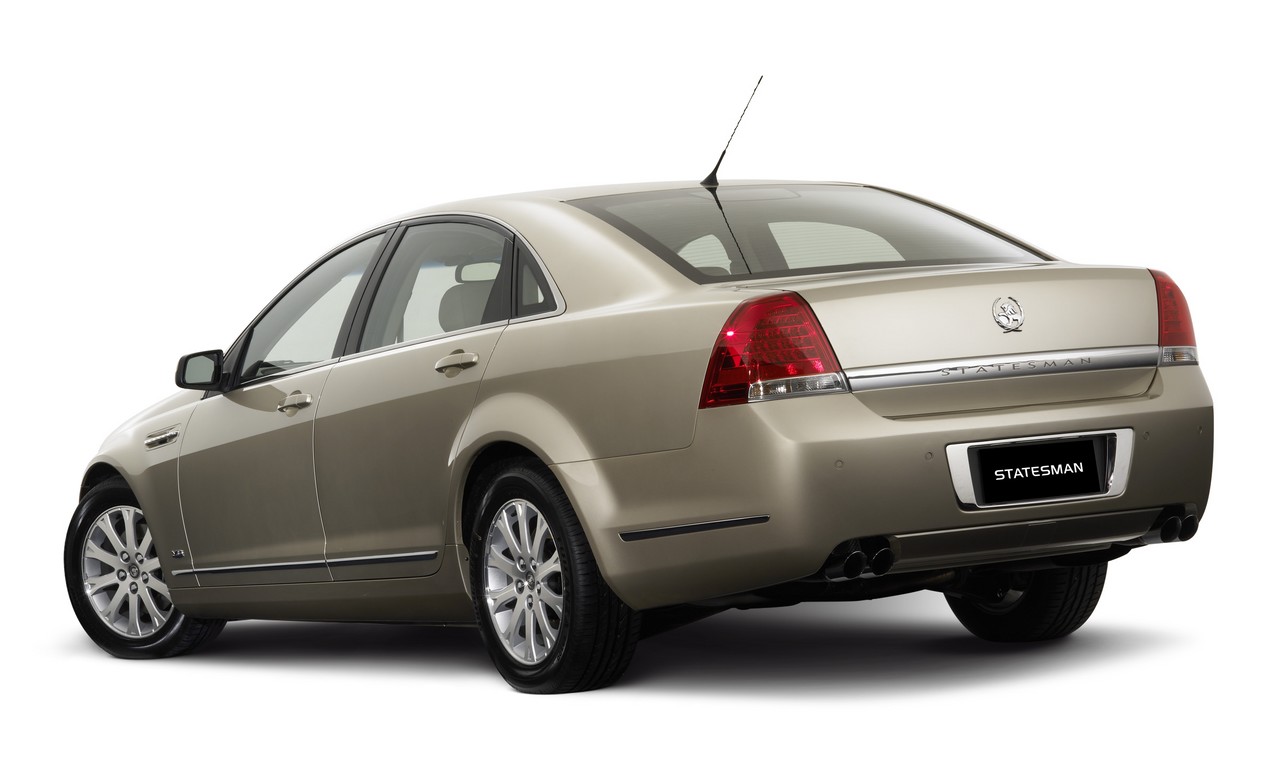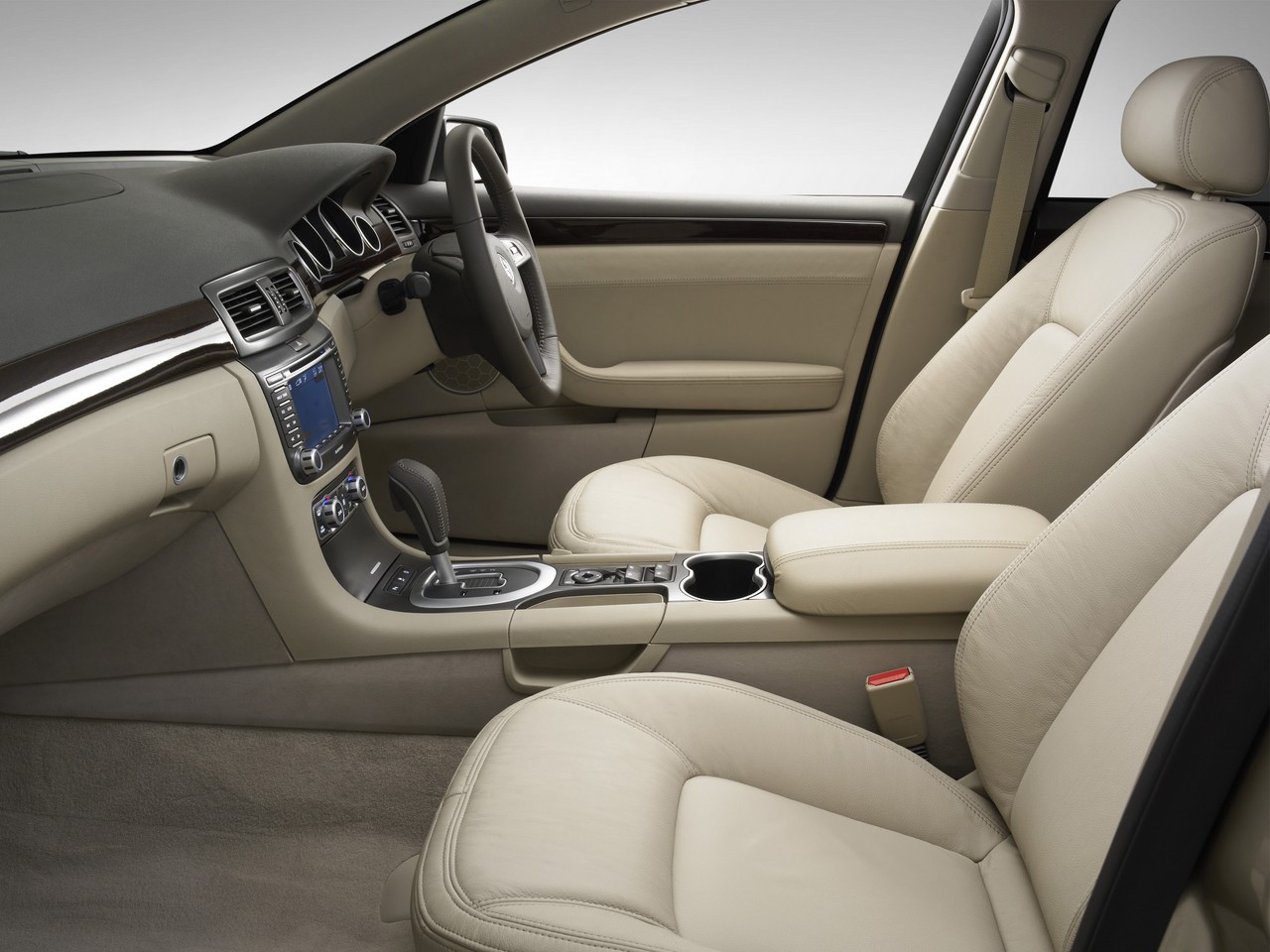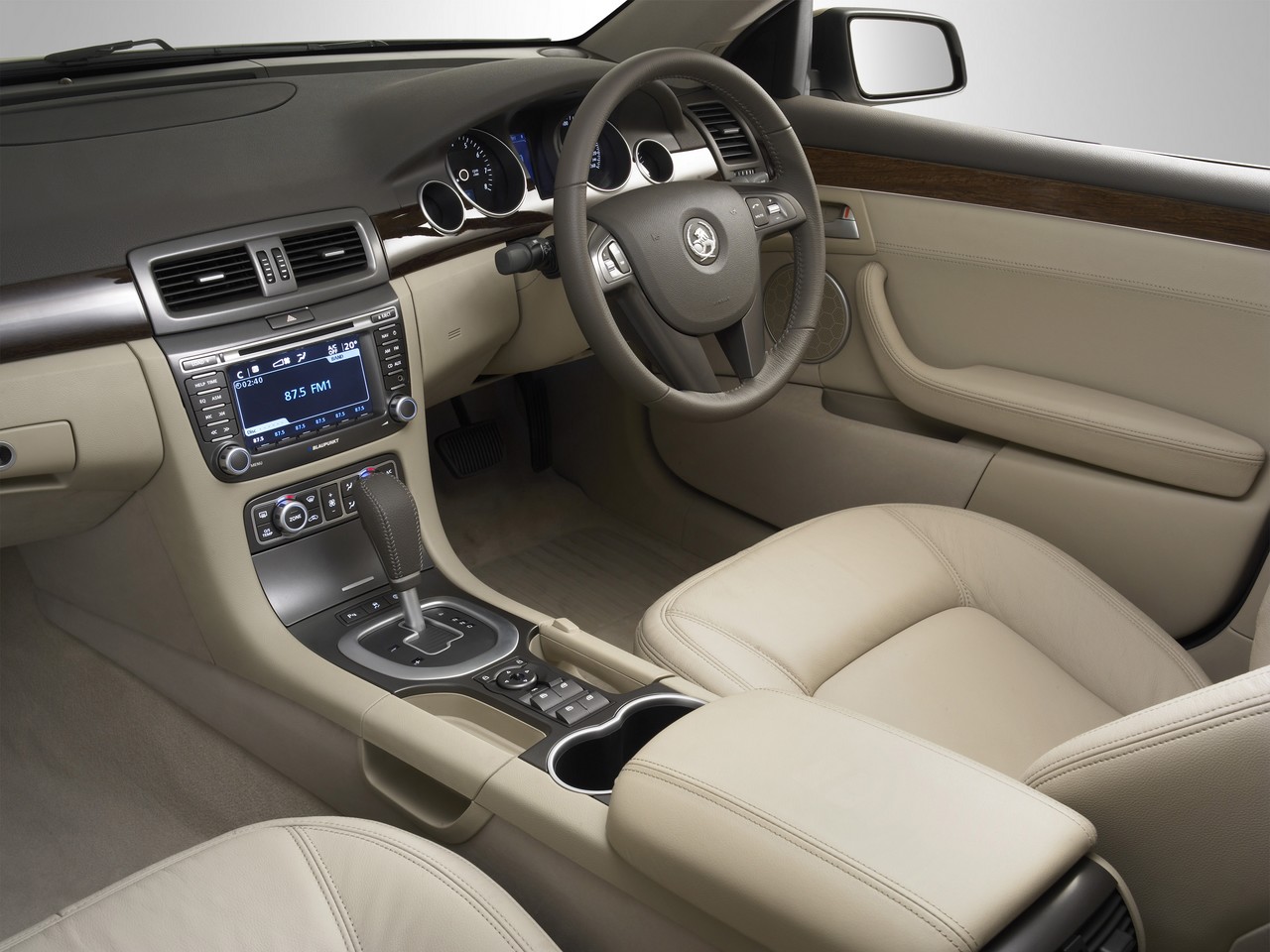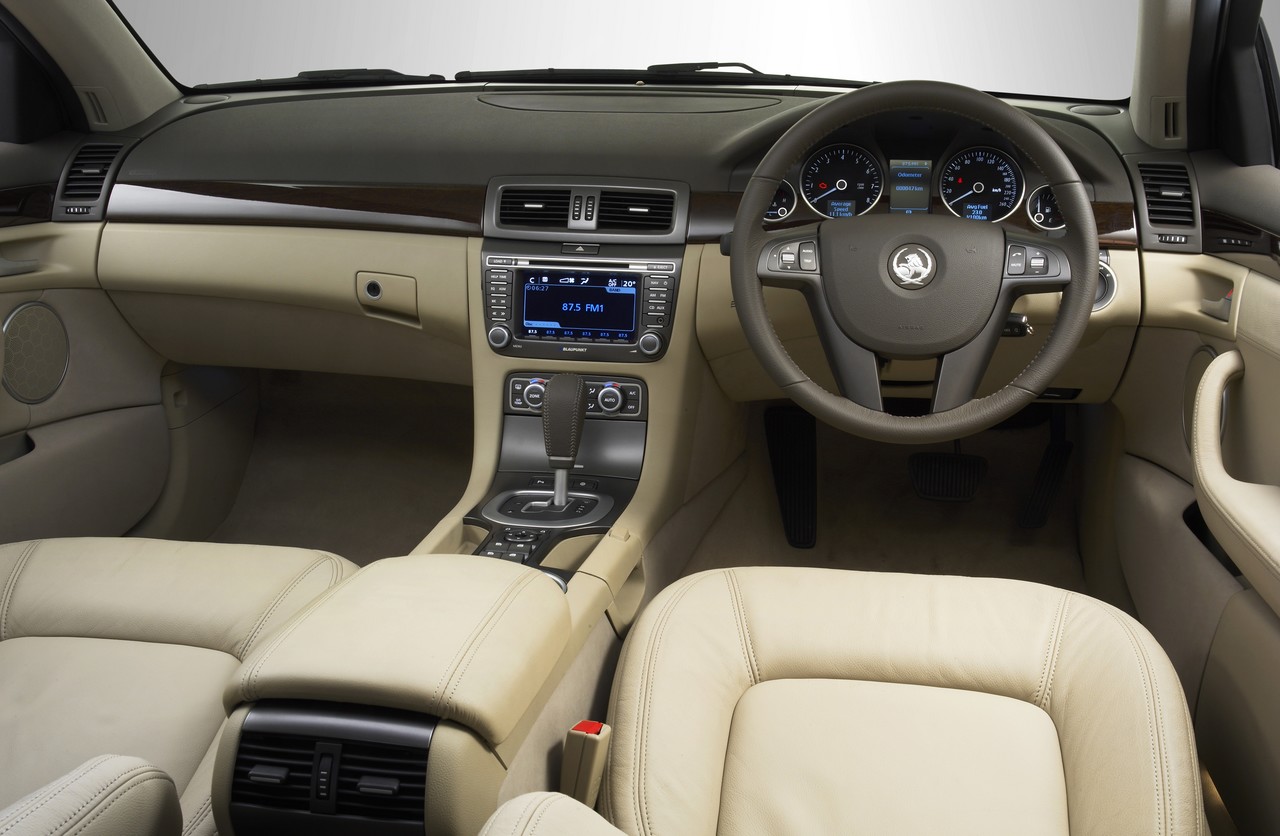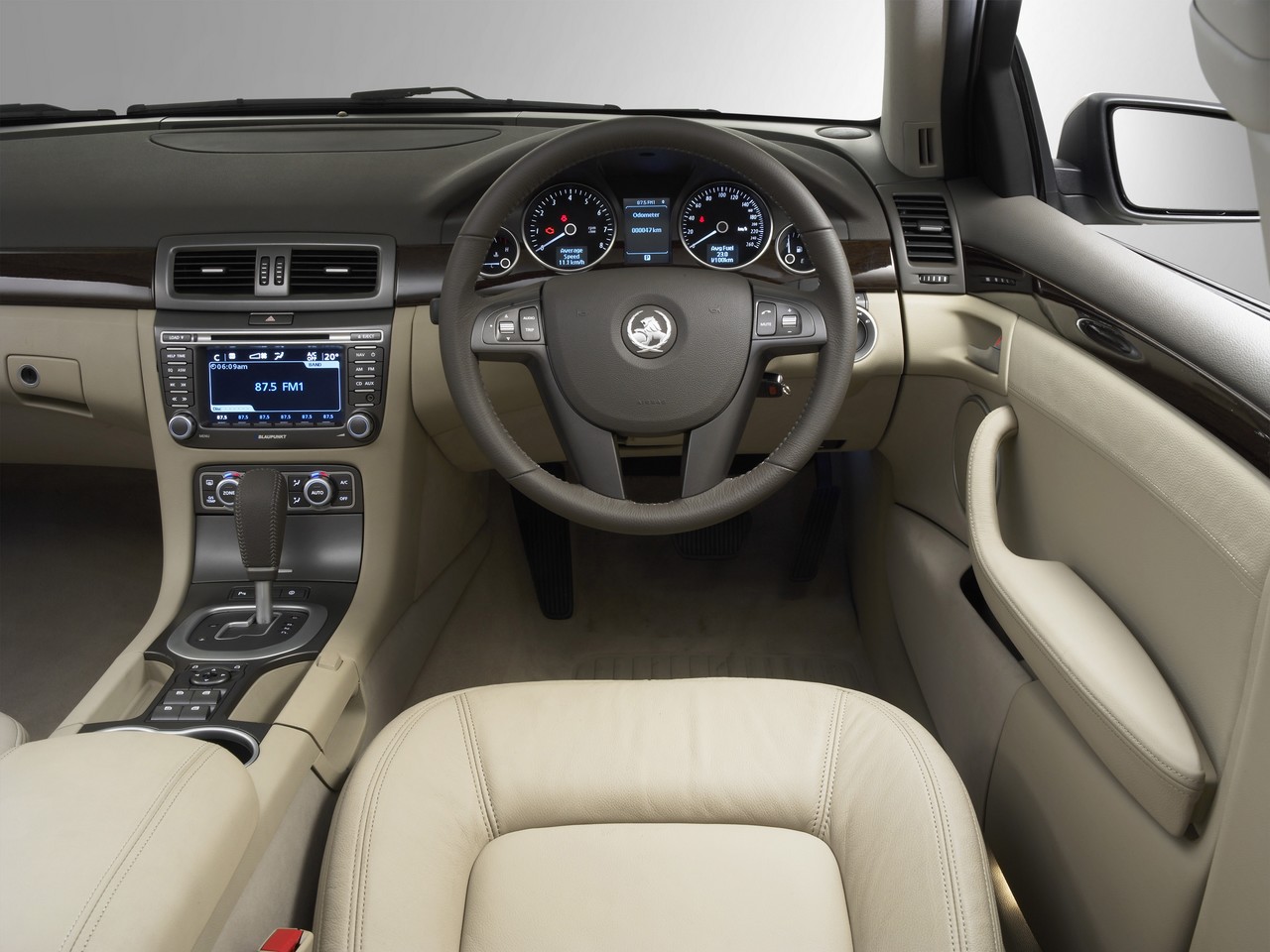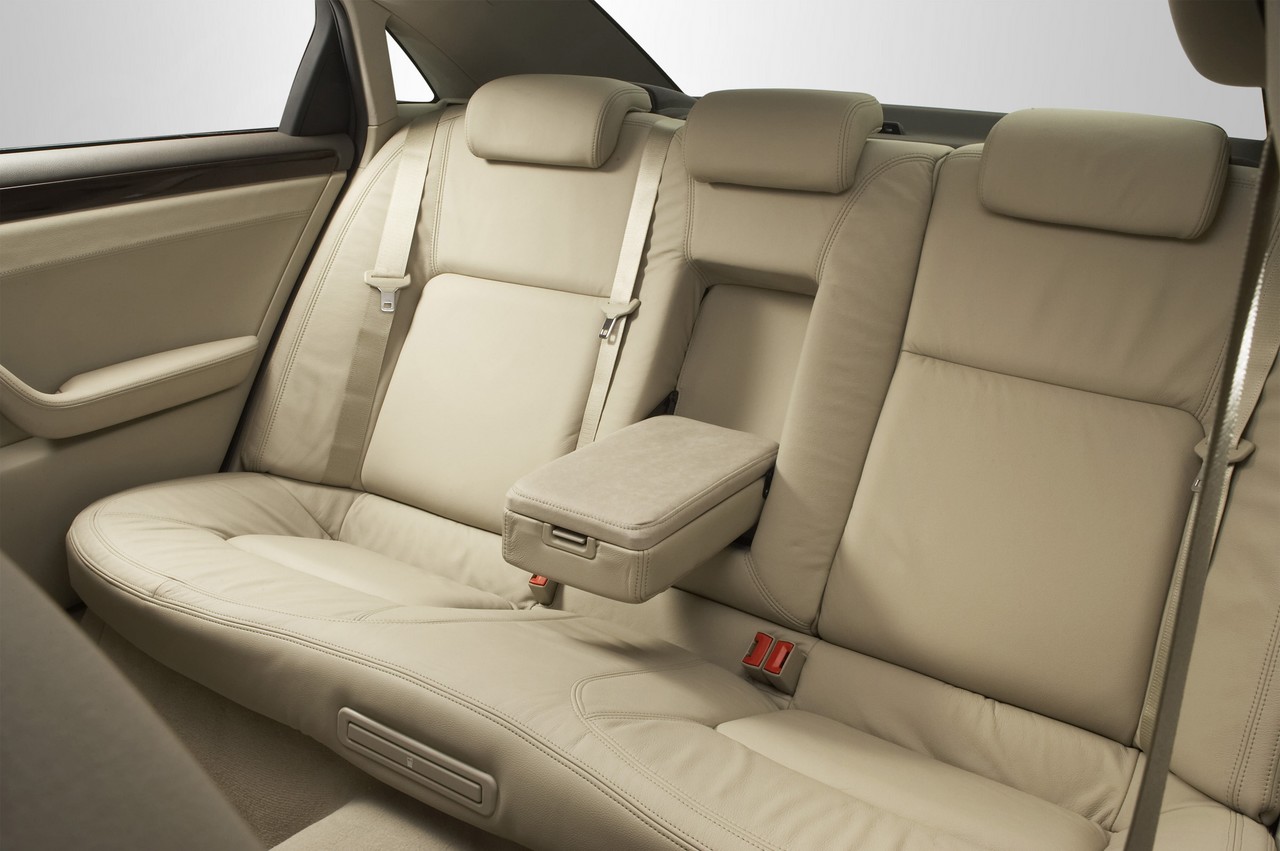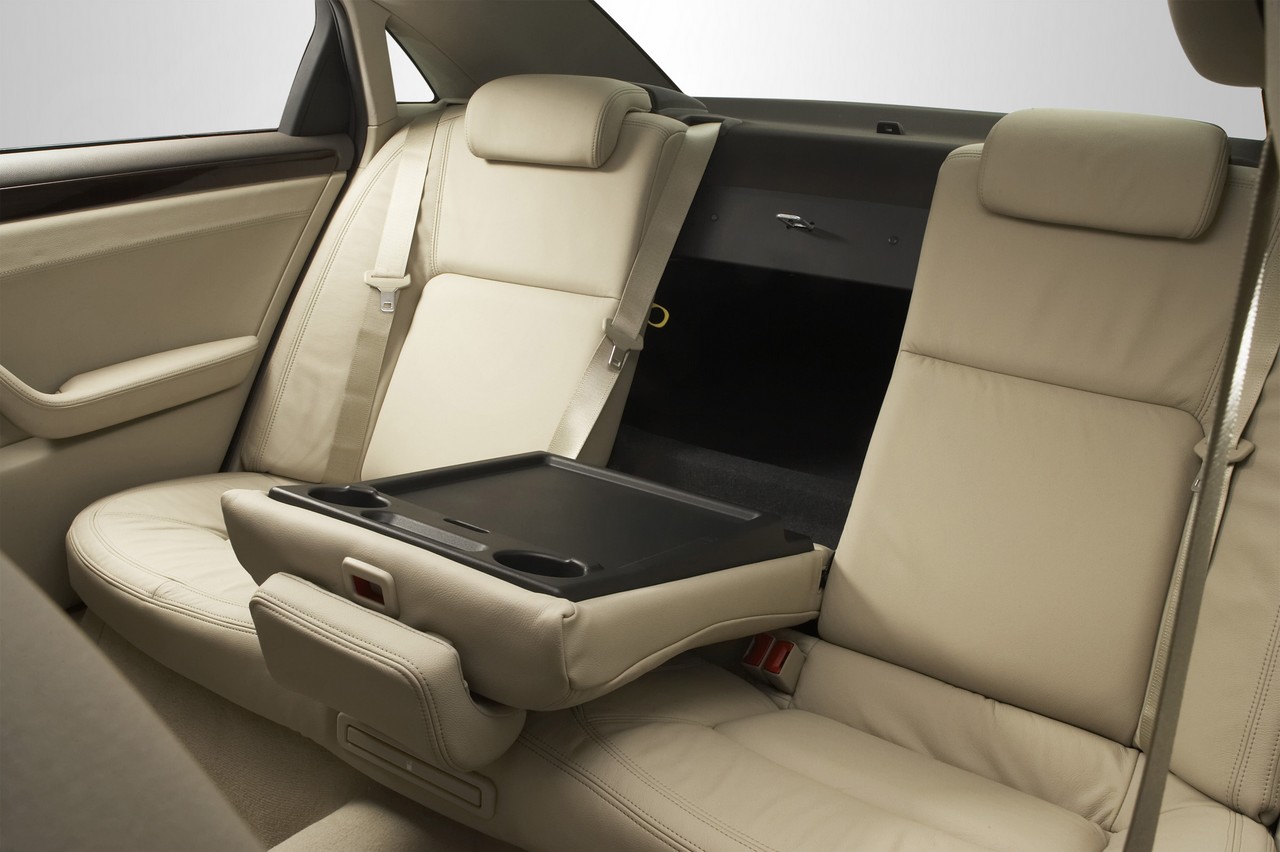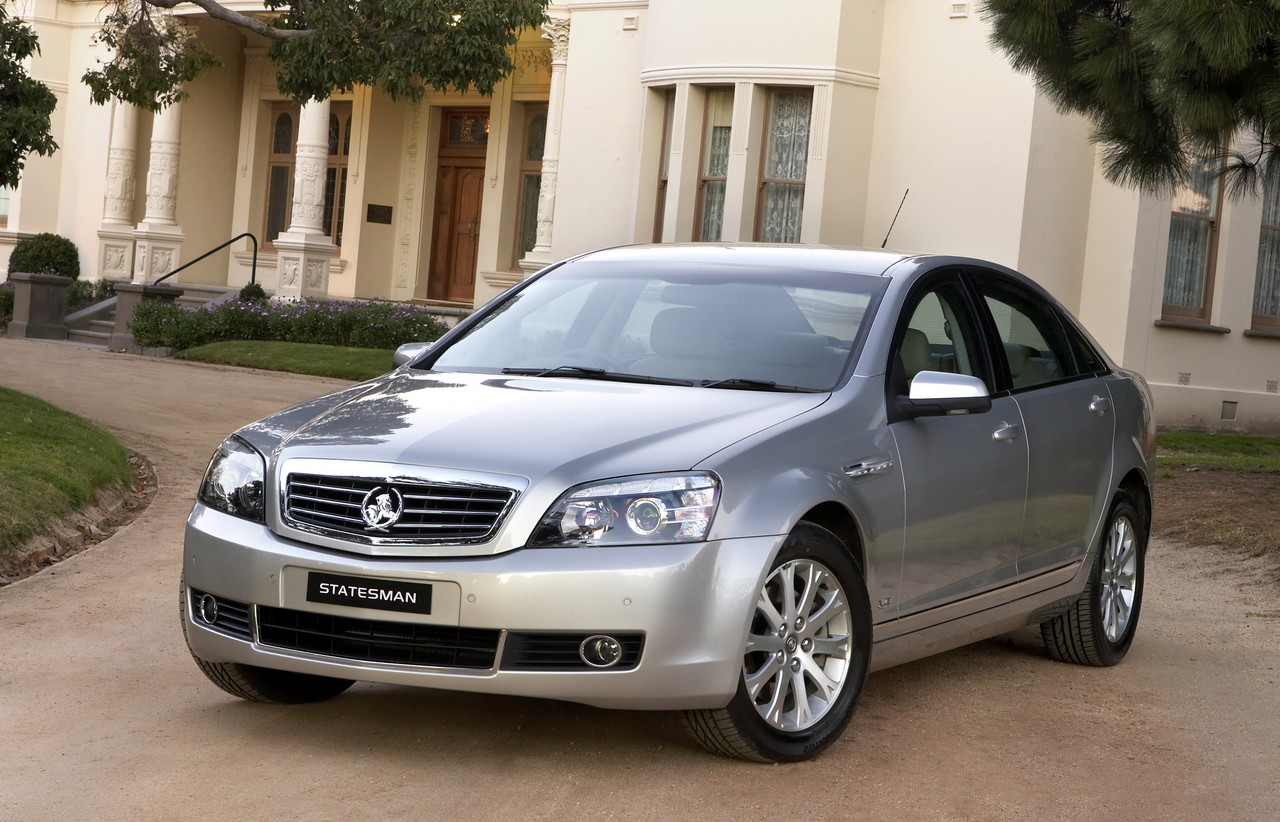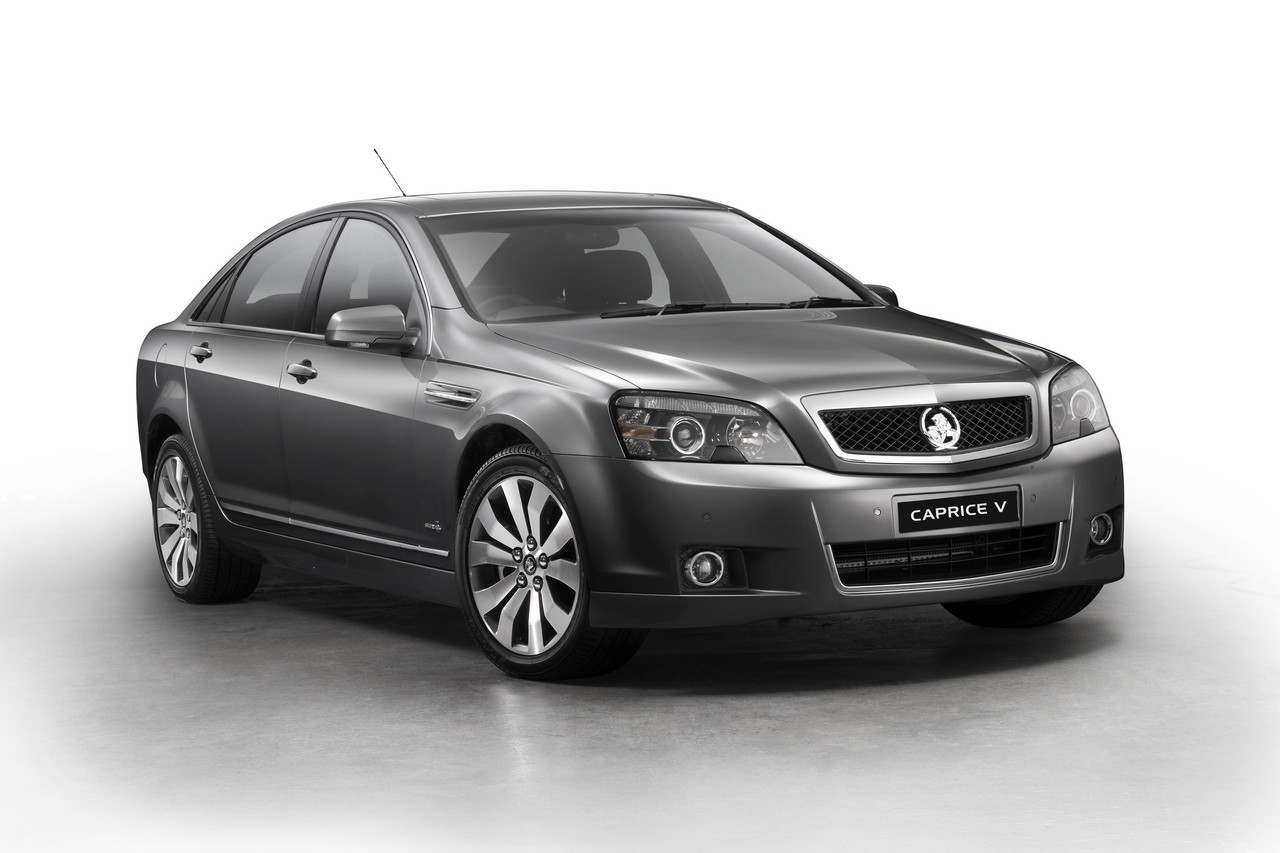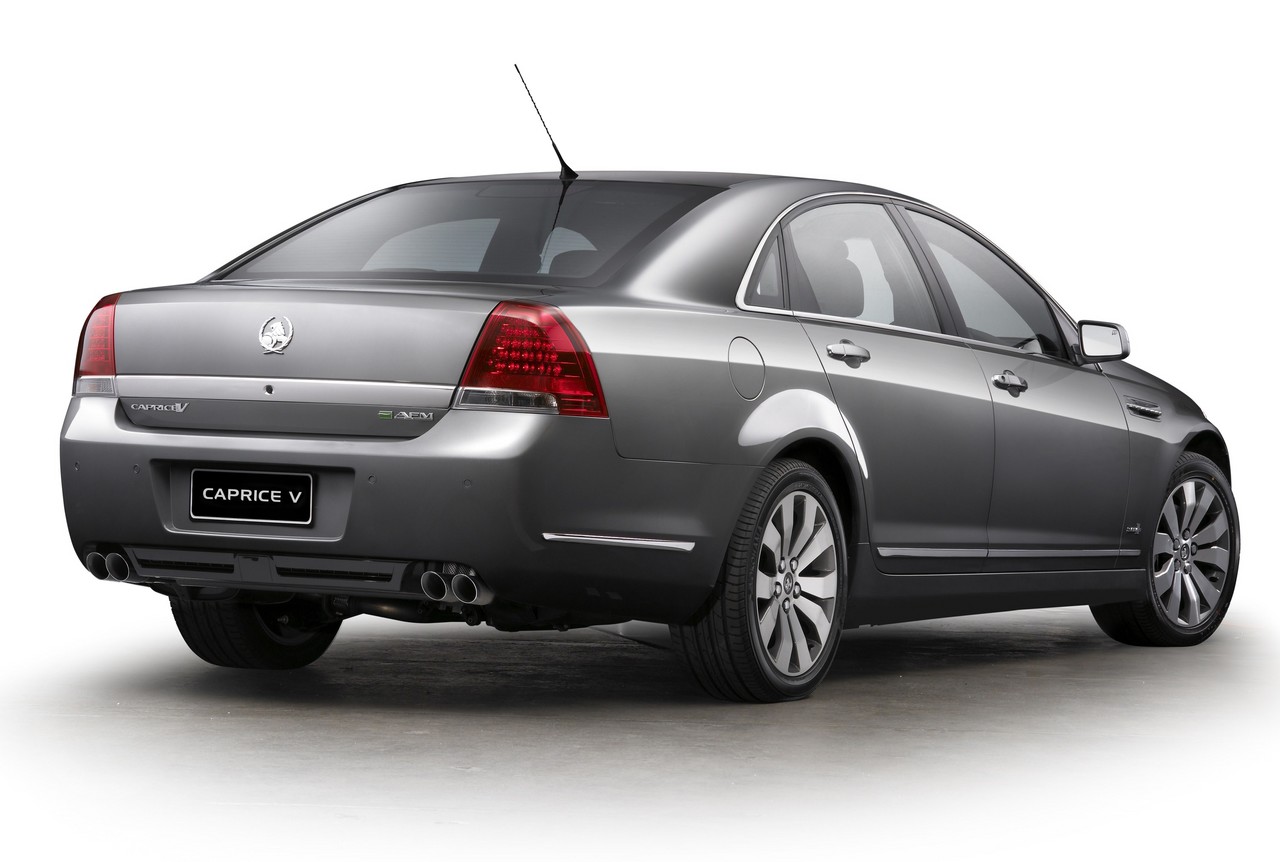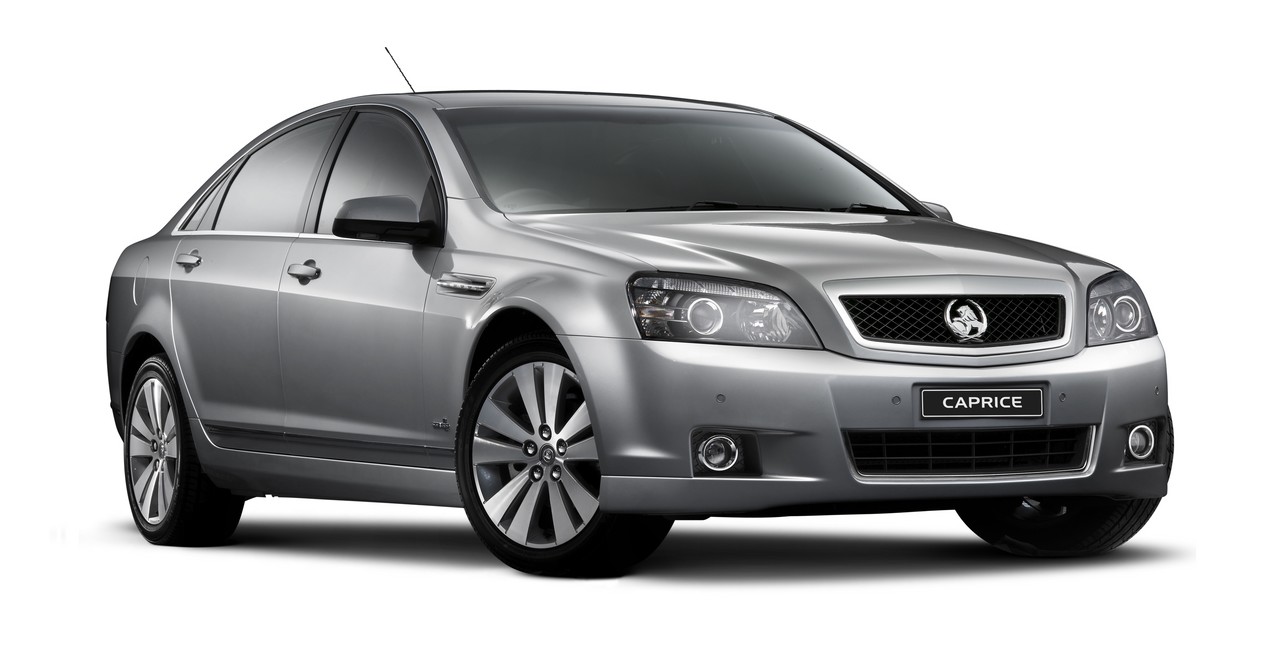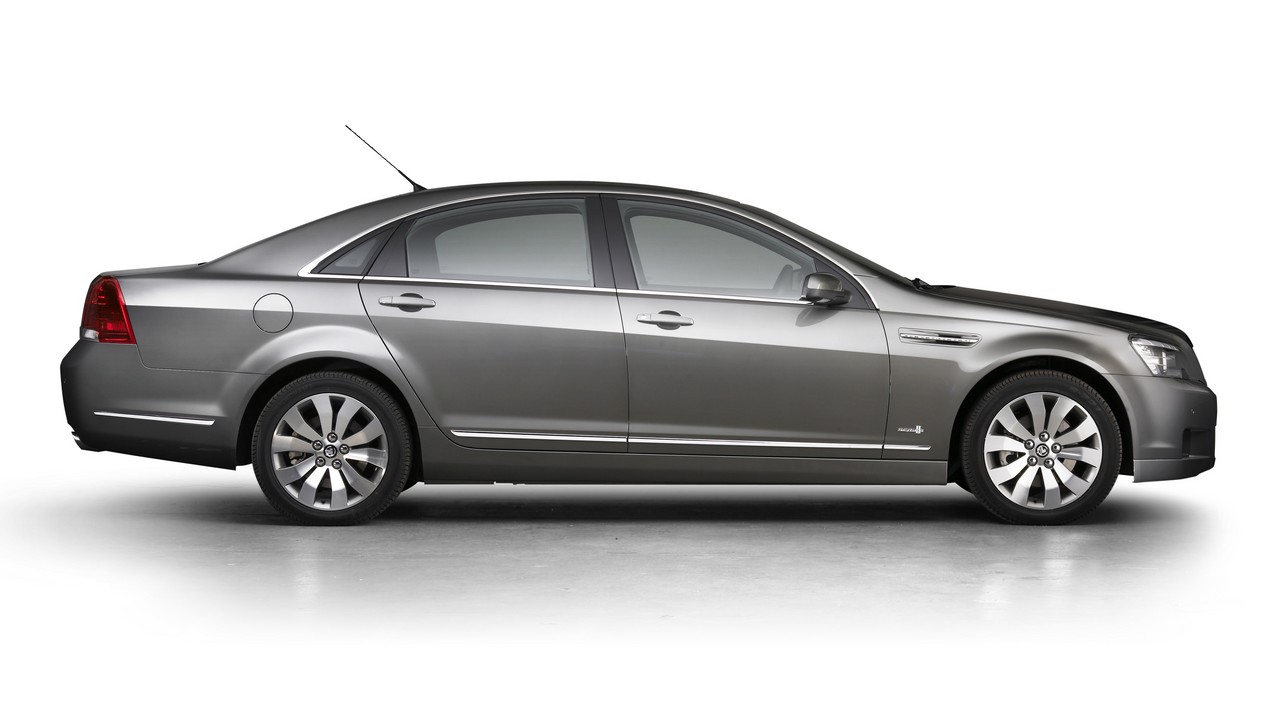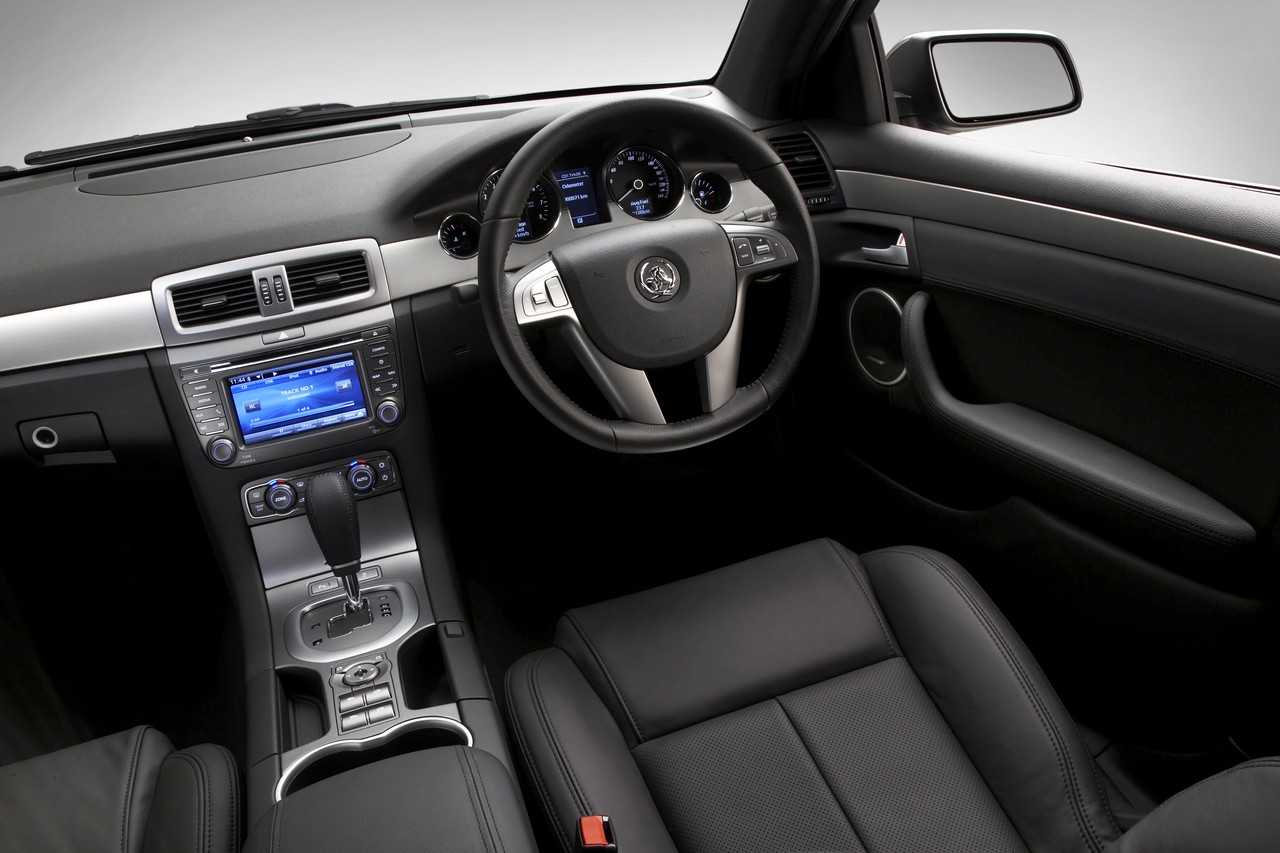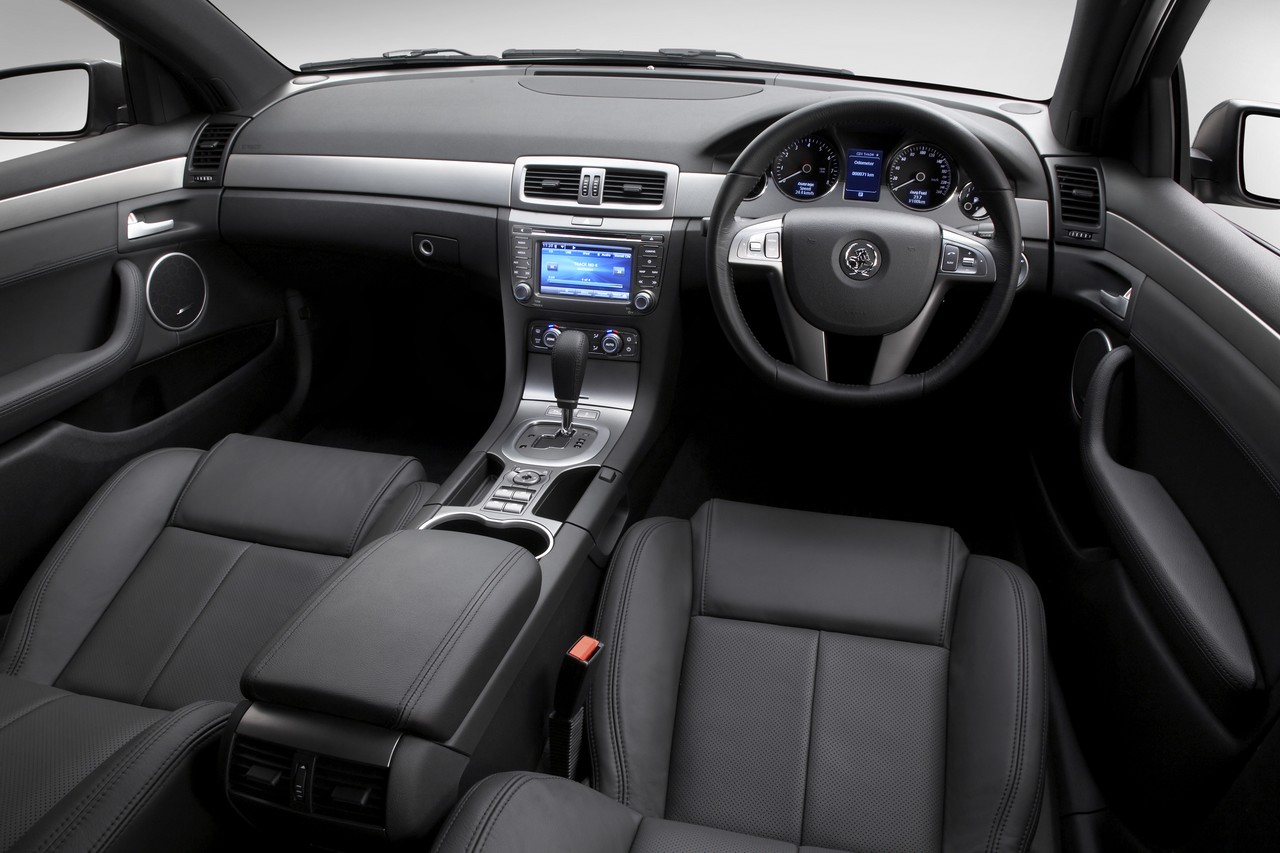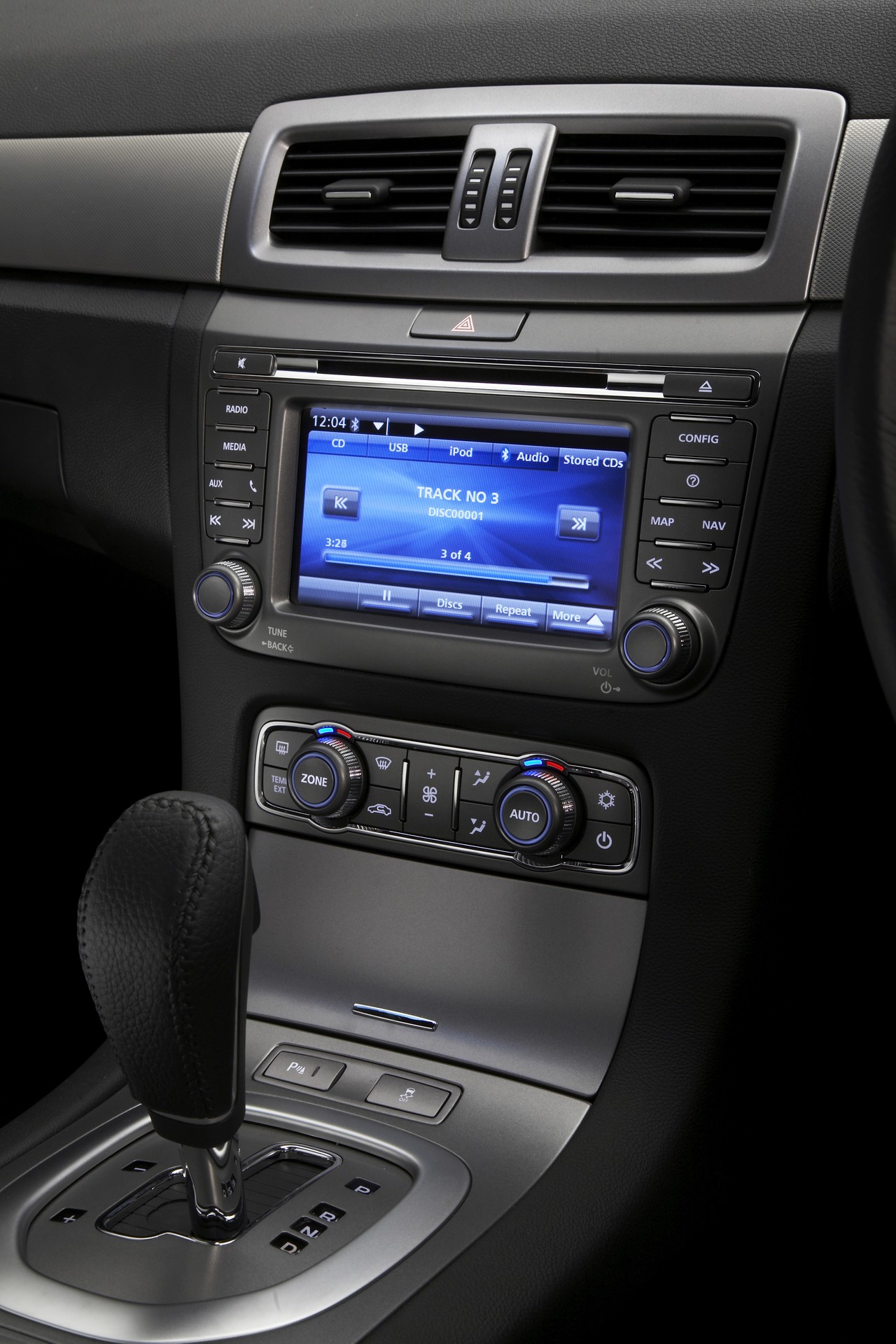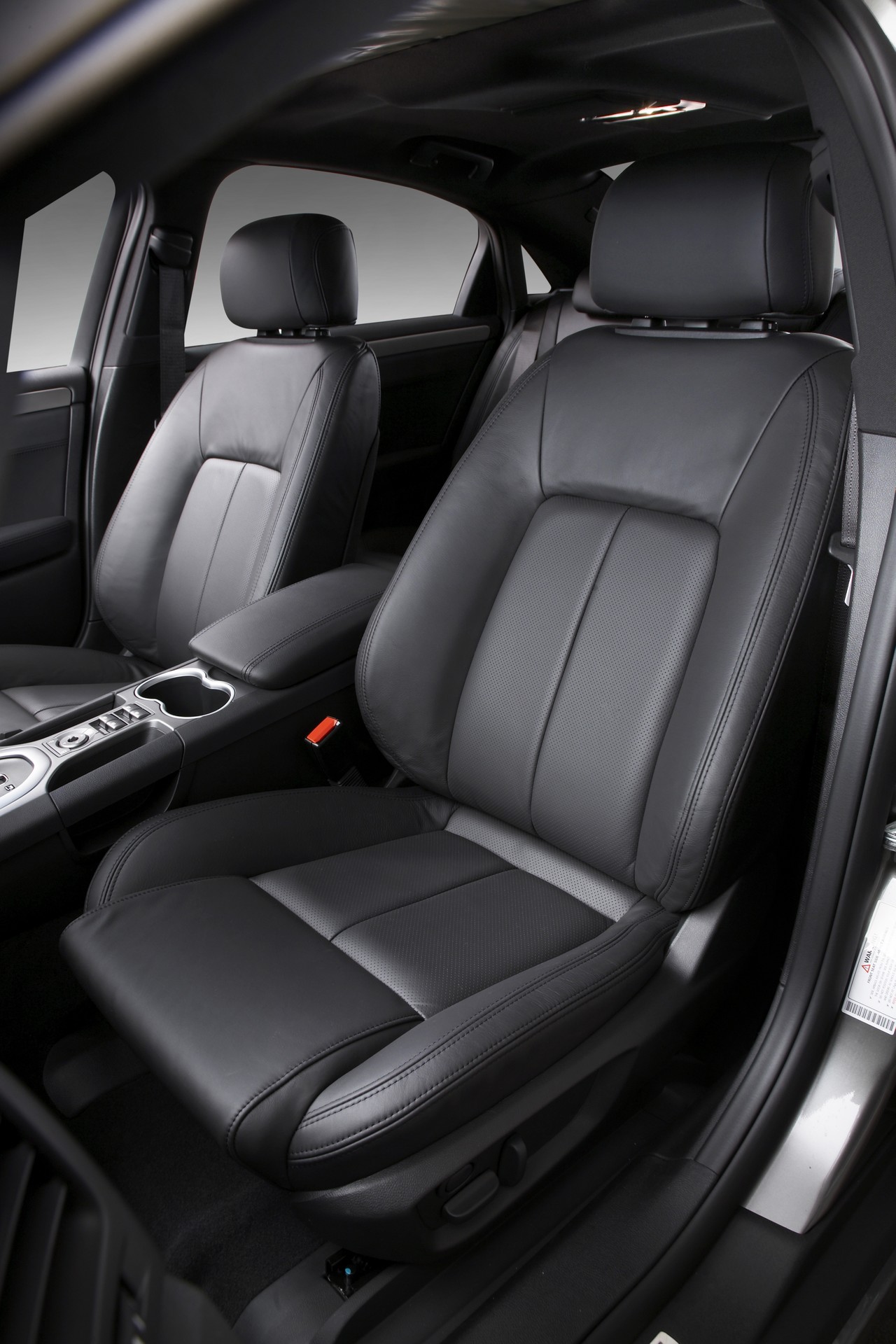
- Spacious and comfortable interior
- Powerful 6.0-litre V8 engines
- Accurate, well-weighted steering
- Generally good ride/handling balance…
- … but firm ride for Caprice
- 3.6-litre ‘Alloytec’ V6 engines lack refinement
- Thick A-pillars impair forward visibility
- Awkward handbrake position and operation
- Pre-May 2007 Alloytec V6 petrol engines susceptible to stretched timing chains
- 3.6-litre SIDI V6 engines susceptible to carbon build-up on intake valves
Holden WM.I Statesman and Caprice (2006-10)
Overview
Released in September 2006, the Holden WM Series I (WM.I) Statesman and Caprice were long wheelbase sedans. Manufactured in Elizabeth, South Australia, the rear-wheel drive WM.I Statesman and Caprice were available with 3.6-litre V6 and 6.0-litre V8 petrol engines that were mated to automatic transmissions.
Engines: Alloytec V6, L98 V8 and L76 V8
Of the engines,
- The 3.6-litre ‘Alloytec’ LY7 V6 petrol engine had all-aluminium construction, a forged steel crankshaft, forged powdered metal connecting rods, double overhead camshafts (DOHC), sequential electronic fuel injection, four valves per cylinder, continuously variable intake and exhaust camshaft phasing, electronic throttle control, twin knock control sensors and a compression ratio of 10.2:1. For the VE range, the Alloytec engines were fitted with new variable intake manifolds, Bosch E77 engine control systems with digital sensors for crank and camshaft positions, front and rear oxygen (O2) sensors, retuned harmonic balancers and a new dual exhaust system;
- Introduced in September 2009 (‘MY10’), the 3.6-litre LLT V6 petrol engine had direct injection (Holden’s Spark Ignition Direct Injection or SIDI) – whereby fuel was pressurised and injected directly into the combustion chamber compression – and a compression ratio of 11.3:1;
- The 6.0-litre L98 pushrod V8 engine had all-aluminium construction, flat-topped pistons, forged powered metal connecting rods, a billet steel camshaft, two valves per cylinder, external knock sensors and a compression ratio of 10.4:1. For the VE range, changes included a high-flow exhaust system with 2.25-inch pipes and four outlets; and,
- Introduced in January 2009, the 6.0-litre L76 V8 engine had displacement on demand hardware (Holden’s Active Fuel Management or AFM) that could shut down four cylinders under light throttle loads in higher gears. Although similar to the L98 engine, the L76 engine had a different camshaft profile and a smaller sump.
For the WM range, new engine control systems were introduced which used digital sensors for crank and camshaft positions. Service intervals for the V8 engines were also extended to 15,000 kilometres (previously 10,000 kilometres).
Transmissions
The V6 engines were initially available with five-speed 5L40E automatic transmissions, though for the 3.6-litre LLT engines, these were replaced by six-speed 6L50 transmissions. The V8 engines were solely available six-speed 6L80 automatic transmissions. Both the 6L50 and 6L80 transmissions had an ‘Active Select’ function which enabled the driver to perform sequential gearshifts by tapping the gear shifter.
Development and dimensions
Developed at a cost of $190 million – in addition to the $1 billion for the VE Commodore program – the WM Statesman and Caprice were underpinned by GM’s Zeta platform which – due to its higher proportion of advanced-strength steels – provided a more rigid body. Like the VE Commodore, the WM Statesman and Caprice had a stiffer engine cradle with six mounting points, acoustic laminated windscreens, new engine covers and bonnet insulators, new sound absorption packages (behind the engine bay and between the transmission and transmission tunnel), insulating carpets and a new double-isolated ZF differential. Tyre pressures were also increased to 250kPa (36.25 psi) to reduce rolling resistance and improve fuel economy.
Compared to the WL Statesman and Caprice , the WM Statesman and Caprice were 77 mm shorter (at 5160 mm), 52 mm wider (1899 mm), 21 mm taller (1480 mm) and had 70 mm longer wheelbases (3009 mm).
From September 2009 (‘MY10’), the Statesman and Caprice were fitted with additional engine bay insulation and a quieter muffler, while the Statesman was fitted with low rolling-resistance Bridgestone Turanza tyres for improved fuel economy.
Suspension
The WM Statesman and Caprice had ‘Linear Control’ suspension which consisted of double-pivot MacPherson strut-based front suspension with dual lower links (with individual ball joints), a tension link, lateral link and a direct acting stabiliser bar. The rear suspension was a four-link independent system with coil-over shock absorbers, three lateral ball joints per side and a decoupled stabiliser bar.
In September 2009 (‘MY10’), the rear suspension was revised with an additional cross-axis ball joint (in place of a rubber bush in the lower control arm).
| Engine | Production | Trans. | Peak power | Peak torque | |
|---|---|---|---|---|---|
| Statesman, Caprice |
3.6-litre LY7 petrol V6 | Sep 2006 to Sep 2009 | 5sp auto | 195 kW at 6500 rpm | 340 Nm at 2600 rpm |
| 3.6-litre LLT petrol V6 SIDI | Sep 2009 to Sep 2010 | 6sp auto | 210 kW at 6400 rpm | 350 Nm at 2900 rpm | |
| 6.0-litre L98 petrol V8 | Sep 2006 to Dec 2008 | 6sp auto | 270 kW at 5700 rpm | 530 Nm at 4400 rpm | |
| 6.0-litre L76 petrol V8 AFM | Jan 2009 to Sep 2010 | 6sp auto | 260 kW at 5700 rpm | 517 Nm at 4400 rpm |
Safety equipment
Standard safety equipment for the WM Statesman and Caprice included dual front airbags, front side airbags, full length curtain airbags (i.e. for front and rear occupants), ABS, electronic brake force distribution, brake assist, traction control, electronic stability control, active front seat head restraints and front seatbelts with pretensioners and load limiters.
Brakes
WM Statesman and Caprice models with V6 engines were fitted with 298 mm by 30 mm ventilated front brake discs with twin-piston callipers and 302 mm by 22 mm ventilated rear discs with single-piston callipers. Models with V8 engines, however, were fitted with 321 mm by 30 mm front discs and 324 mm by 22 mm rear discs.
ANCAP crash testing
Although the Statesman and Caprice were not specifically tested by ANCAP, they were awarded ratings based on ANCAP’s crash testing of the VE Commodore Omega and evidence that they would perform similarly. From September 2009, the Statesman and Caprice were fitted with a passenger seat belt reminder and these models were awarded a five star adult occupant protection rating with a score of 33.45 out of 37. Prior results for the VE Commodore, however, were not comparable due to its omission of side and curtain airbags.
Features
Standard features for the WM Statesman included ten-spoke 17-inch alloy wheels, a 230 watt sound system with eleven speakers, a six-stack CD player, MP3-compatibility and auxiliary inputs, dual-zone climate control air conditioning, a 6.5-inch multifunction display, leather seats, an eight-way power adjustable driver’s seat and four-way power adjustable front passenger seat, cruise control, Bluetooth mobile phone connectivity, front fog lamps, front and rear parking sensors, automatic projector headlights, rain-sensing wipers, a leather-wrapped steering wheel and gearshift, remote central locking, power mirrors and windows, a height and reach adjustable steering wheel, 12 volt power outlet, cargo net, trip computer, an alarm and immobiliser.
The WM Caprice was further equipped with five-spoke 18-inch alloy wheels with sports suspension, a ten speaker Bose sound system, three-zone climate control air conditioning, soft touch leather seats, deep-bolstered front sports seats with ten-way power adjustment, bi-xenon headlights, DVD player with twin headrest-mounted LCDs, heated door mirrors, driver’s seat and mirror memory settings, rear passenger headrests and tyre pressure monitoring.
Brochure: WM Statesman and Caprice
- Brochure: Holden WM.I Statesman (July 2006)
- Brochure: Holden WM.I Caprice (July 2006)
- Brochure: Holden WM.I Caprice (October 2008)
- Brochure: Holden WM.I Statesman and Caprice (September 2009)
Related links
- Holden Media Archive: Holden Launches WM Statesman and Caprice Flagships (September 2006)
- Holden Media Archive: Improved Fuel Efficiency For Commodore (October 2008)
- Holden Media Archive: Fuel Saving Technology For V8 Automatic Range From 2009 (October 2008)
- Holden Media: Holden VE/WM MY10 Product Information (September 2009)
Holden WM.II Caprice (2010-13)
Overview
Released in September 2010, the WM Series II (WM.II) range consisted solely of the Caprice as the Statesman was discontinued. For the WM.II Caprice range, the 6.0-litre L76 V8 engine was replaced by the flex-fuel capable 6.0-litre L77 V8 engine. With flex-fuel capability, the engine could run on a mixture of petrol and ethanol up to E85 (i.e. 85 per cent ethanol and 15 per cent petrol). Although ethanol has a lower energy density than petrol, its higher octane rating enables it to provide greater performance.
Fuel consumption for the WM.II Caprice was also improved through the fitment of a clutched air conditioning compressor and lower engine idle speed for the 3.6-litre LLT SIDI V6.
November 2011 update (MY12): LFX engine and 6L45 transmission
In November 2011, the 3.6-litre LLT V6 petrol engine was replaced by the flex-fuel capable 3.6-litre LFX V6 engine. Furthermore,
- For models with V6 engines, the six-speed 6L50 transmission was replaced by the more efficient 6L45; and,
- The air conditioning system was re-engineered – for V6 and V8 models – to improve its efficiency and draw less power.
LWR dedicated LPG engine
In February 2012, the dual fuel LW2 V6 engine was replaced by the dedicated LPG LWR . The 3.6-litre LWR engine had multi-point vapour injection (rather than liquid injection as per the Ford FG Falcon’s ‘LPI’ engine) which heated the gas immediately prior to injection. Compared to the 3.6-litre LY7 engine, the dedicated LPG engine had hardened valves and valve seats, a redesigned cylinder head and manifold for improved air flow, variable exhaust valve timing, specially-developed fuel injectors, new pistons with pentroof-style domes, a compression ratio of 12.2:1, a new fuel rail and new LPG fuel filter. Like other models with V6 engines, the LWR engine was also mated to the six-speed 6L45 automatic transmission.
To alleviate concerns over range, the dedicated LPG Caprices were fitted with an 84-litre twin cylinder fuel tank manufactured from high-strength, aircraft-grade extruded aluminium. To accommodate the tank, the spare wheel was omitted and a puncture repair kit was provided. Models with the dedicated LPG engine also had a single pipe exhaust system to conserve mass.
| Engine | Years | Trans. | Peak power | Peak torque | |
|---|---|---|---|---|---|
| Caprice | 3.6-litre LLT petrol V6 SIDI | 2010-11 | 6sp auto | 210 kW at 6400 rpm | 350 Nm at 2900 rpm |
| 3.6-litre LFX petrol/E85 V6 SIDI |
2011-13 | ||||
| 3.6-litre LWR LPG V6 | 2012-13 | 6sp auto | 180 kW at 6000 rpm | 320 Nm at 2000 rpm | |
| Caprice V | 6.0-litre L77 petrol V8 AFM | 2012-13 | 6sp auto | 260 kW at 5700 rpm | 517 Nm at 4400 rpm |
Features
Compared to its predecessor, standard features for the entry-level Caprice included 18-inch machined alloy wheels, a 6.5-inch colour touch-screen Holden-IQ system with single CD player, 1 GB flash drive, MP3-compatibility, USB and auxiliary input, integrated iPod support, enhanced Bluetooth (phone book display, touch-screen dialing), Bluetooth audio streaming, colour satellite navigation mapping with voice control and real-time traffic information, rear camera and tyre pressure monitoring.
The Caprice V-Series was differentiated by its 19-inch machined alloy wheels, ten speaker (including subwoofers) Bose sound system, three-zone climate control air conditioning, Nappa leather upholstery, DVD player with twin headrest-mounted LCDs for rear passengers with wireless headphones, bi-xenon headlights and power sunroof.
In November 2011, the iQ media interface was enhanced in November 2011 with improved Bluetooth connectivity and smartphone-compatibility updates.
Brochures: WM Statesman and Caprice
Related links
